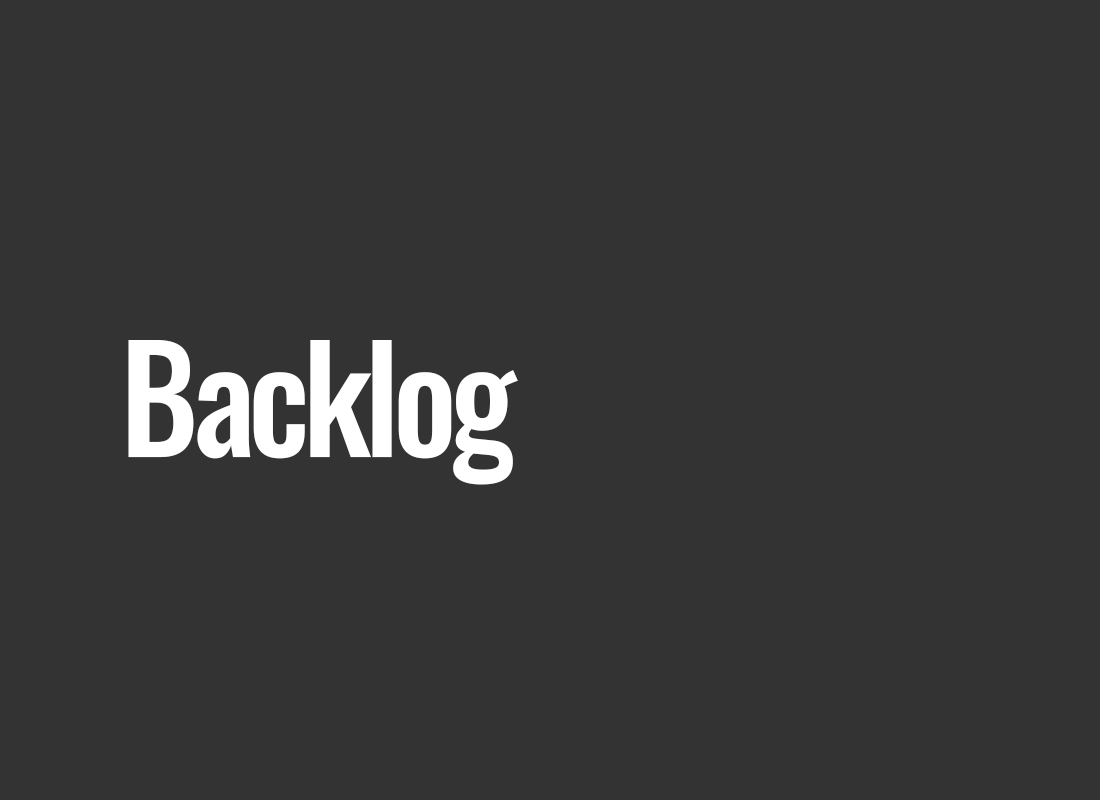Backlog
In the dynamic world of industries where the pace of change is constantly accelerating, effective project management becomes a key challenge. In this context, the concept of "Backlog" emerges as a kind of treasure trove of ideas and tasks waiting for implementation. In an environment dominated by modern technologies, e-commerce, marketing, business, and IT, the backlog is not just a to-do list but a strategic tool that enables flexible adaptation to new challenges and rapid response to changing circumstances.
In practice, the backlog serves as a repository of potential. It is a place where ideas, suggestions, and features with the potential to enrich a project are gathered but have not yet found their place in the current stage. The value of the backlog lies not only in storing information; it is a comprehensive tool that allows focusing on current tasks while enabling future planning and innovation implementation.
Treasury of Potential
The backlog plays the role of not only a task list but primarily a treasure trove of ideas and potential improvements. In the context of User Experience (UX), the backlog may include proposals for interface enhancements, new features, or suggestions for optimizing navigation. This allows the UX team to systematically gather and analyze ideas, facilitating the gradual implementation of improvements without disrupting ongoing project processes.
In e-commerce, the backlog becomes a strategic tool for teams responsible for the development of trading platforms. It contains proposals for new features, optimization of purchasing processes, or ideas for innovative solutions that increase conversion. For example, the backlog may include tasks related to the implementation of personalized product recommendations, significantly impacting the shopping experience for customers.
User-Friendly Mechanism
The backlog is not just a place to store ideas but also a user-friendly mechanism that allows teams to focus on current tasks. It acts as a filter, separating priorities from potential initiatives. In practice, teams using the backlog can regularly analyze accumulated ideas, assign priorities, and then plan their implementation in the project schedule. This makes the project management process more transparent, eliminating chaos and focusing on key goals.
Effectiveness of the Agile Methodology
The backlog is inseparably linked to the Agile methodology, which has gained immense popularity in the IT field. In the Agile context, the backlog is a collection of tasks that can be gradually unearthed and transformed into ready solutions during successive sprints. For example, an Agile team working on an IT project can use the backlog to store ideas for new features, corrections, or tasks identified during retrospectives. This tool allows for flexible project adaptation to changing market conditions and current user needs.
Agile Tool in Practice
In practice, an Agile team working on expanding an e-commerce platform uses the backlog to gather ideas for new features. Sample backlog tasks may include implementing a product recommendation system, improving the order finalization process, or optimizing page performance. By selecting tasks from the backlog for a specific sprint, the team can effectively plan and adjust the project to current market needs, thereby influencing user satisfaction and increasing platform competitiveness.
Marketing Inspirations
In the marketing department, the backlog serves as an inspirational source. The marketing team can use the backlog to gather ideas for new campaigns, content marketing strategies, or website improvements. For instance, the backlog may include tasks related to creating new blog content, organizing promotional contests, or optimizing content for SEO. Thanks to the backlog, the marketing team has flexibility in adjusting strategies to changing market trends, translating into the effectiveness of marketing activities.
E-commerce in Practice
In e-commerce, the backlog may encompass proposals for new features in the online store, optimizations of the purchasing process, or suggestions for improving the customer experience. For example, the backlog may include tasks related to implementing automatic notifications of new offerings, which can increase customer engagement. By effectively utilizing the backlog, e-commerce teams can adapt their platforms to rapidly changing customer preferences, thereby increasing competitiveness in the market.
Summary
The backlog becomes an indispensable tool in areas where the pace of change is exceptionally intense. In today's dynamic business environment, using the backlog enables companies to manage projects effectively, eliminating chaos and focusing on key goals. Regardless of the industry in which a company operates, the backlog is a central place where the foundations for future innovations are laid.
The backlog is not just a to-do list but a comprehensive tool that allows for effective planning, idea gathering, and rapid response to changing market conditions. Whether we are talking about UX, e-commerce, marketing, or IT, the backlog is a crucial element that allows for maintaining competitiveness and effectively adapting to current challenges. The introduction and efficient use of the backlog become key not only for project success but also for the sustainable development of companies in dynamic industries.




